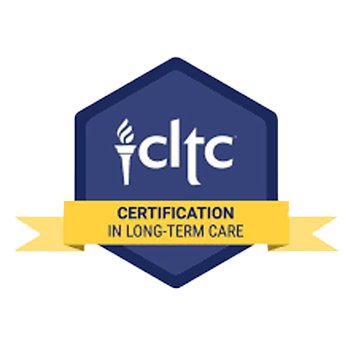Art or science? A bit of both. And as medical protocols, outcomes and technology evolves, underwriting changes.
Mortality or Morbidity
Today, underwriting mortality, a calculation of when we will die, for life insurance can be very precise. It has been around for centuries. The first known policies date back to 1583 in England. And life insurance is definitive. We are all going to die. Given where one was born, family health history, lifestyle and other factors, actuaries and underwriters can be predictive about mortality. I call this science, given all the data available.
However, underwriting morbidity, a prediction of illness, for long-term care insurance is more challenging today.
Depending on the product design, morbidity may involve all the mortality factors, along with figuring out:
- Who will get sick?
- What will the illness be?
- How serious will the illness be?
- How long will it last?
Add to these a number of other factors such as age, build, tobacco use, marital status and gender. I describe underwriting morbidity as a combination of art and science.
Complicating the challenge is that you might be one of the lucky 30% of Americans aged 65 and older who never need assistance.
Take my 102-year-old father for example. In July, he traveled from Dallas to Jackson Hole for his annual river rafting trip with his great-grandchildren. And in August, he died of natural causes. Dad had two LTCI policies. He never used either. One of the lucky 30%! But he was well prepared.
Changes In Underwriting
Yes, there are underwriting guides for life insurance, but underwriting morbidity is challenging. And changing.
In the early days of long-term care insurance, carrier underwriters looked at functional ability. The old applications, dating back to the 1970s, are indeed insightful as to the lack of knowledge about underwriting morbidity.
Today, some of the most common uninsurable conditions include:
- Memory loss
- Any loss of activities of daily living (bathing, dressing, eating, toileting, continence, transferring)
- Average blood pressure greater than 170/94
- Co-morbids (multiple conditions such as diabetes and coronary disease)
- Medications
- Non-compliance
- Use of assistive devices (walker, wheelchair, electric scooter, stairlift or oxygen)
Questionable insurability conditions include:
- Neurological disorders
- Some autoimmune disorders
- Alcohol and/or drug use
- Tobacco use with medical conditions
- Obesity or anorexia
- Severe osteoporosis
Today, underwriting is much more sophisticated. And the primary reason for long-term care insurance claims is cognitive impairment. A cognitive skills exam is now part of the underwriting process for applicants aged 60 or 65 and older, depending on the carrier.
The Process
Since the introduction of ACA in 2014, underwriting for most health care plans is prohibited and this includes aging into Medicare. As a result, many consumers think that long-term care insurance is the same. If you want it, you can have it.
Not so. It is medically underwritten. Here is a list of underwriting resources most insurers use today:
- The application – This is a legal document and made part of the policy.
- Medical Information Bureau (MIB) report – This is a database where insurance companies share information. If you have applied for any type of life or health insurance, you will have a MIB record.
- Med Data Report – Each time you visit a doctor or hospital, the billing and medical information is collected in this central database. It contains diagnosis codes, services received, referrals to specialists and prescriptions written.
- Prescription Drug Data Collection (RxDC) report — Detailed information on a patient’s prescriptions from all prescribers and pharmacies.
- Telephone Interview – If you are between ages 60 and 64, even younger if requested by an underwriter, a phone interview is required. The interviewer will ask questions about daily activities, current health, medications, social activities, living arrangements, use of medical devices, plans for surgeries or medical testing and more.
- Face-to-Face Interview – For applicants age 65 and older and face-to-face interview is required by most carriers. Measurements for height and weight will be taken along with blood pressure. A cognitive skills exam will also be conducted.
- Attending Physician Statement (APS) – Underwriters may also require medical records from the primary care doctor or specialist depending on health history and control of medical condition(s).
We frequently consult with financial advisors and consumers alike who assume a person is uninsurable. Usually, this relates to a spouse. The uninsurable individual has had cancer, a heart attack, has a pacemaker, diabetes, depression, etc. All of these medical conditions can be insurable depending on stage and grade, severity, onset, treatment and so forth.
Adverse Selection
We tend to experience waves of adverse selection. Meaning? People who know they will need assistance as they age due to medical conditions want to secure LTCI.
Years ago, we designed a health history questionnaire to determine as best we could where we had the best opportunity to place a policy given a potential applicant’s health history. The questionnaire is detailed and provides the information we need to conduct underwriting prescreening consultations with carrier underwriters.
Decades ago, we might have conducted consultations for about 10% of our clients. Today, it is close to 90%. Adverse selection? Maybe. Most of our clients are older. More have medical conditions. And underwriting has changed.
Not everyone who wants long-term care insurance can qualify for it. This could be because of aging out the opportunity, having a medical condition that is uninsurable or taking medication that is uninsurable. But there may still be attractive options for you to efficiently fund long-term care expenses.
Learn Your Options
Our Four-Step Process starts with a conversation. Contact us today!




